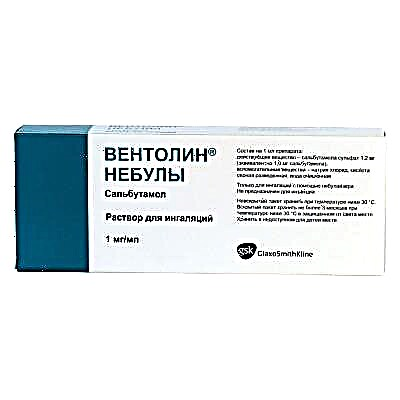
"Sofradex" is considered one of the most effective remedies for otitis media, conjunctivitis, blepharitis and many other diseases. Is it prescribed to children and in what doses is it used in childhood?
Release form
The drug is represented by drops, which are both eye and ear drops. By its physical properties, "Sofradex" is a transparent solution with a peculiar odor. It is practically colorless and is placed in a 5 ml glass bottle. The bottle comes with a transparent plastic dropper cap.

Composition
The action of "Sofradex" is provided by three ingredients at once:
- dexamethasone (this substance is present in drops in the form of sodium metasulfobenzoate at a dosage of 500 μg / 1 ml);
- framycetin sulfate (this component is contained in 1 ml of solution in an amount of 5 mg);
- gramicidin (the dose of such a substance in 1 ml of the drug is 50 μg).
Additionally, phenylethanol, lithium chloride and sterile water are added to the medicine. In addition, the solution includes ethyl alcohol, sodium citrate, polysorbate 80, and citric acid.

Operating principle
The effect of "Sofradex" on the human body is due to its active components.
- Framycetin is an antibiotic aminoglycoside, therefore it has a bactericidal effect on many bacteria, including staphylococcus aureus, Proteus, Escherichia coli and other microorganisms.
- Gramicidin also refers to antibacterial agents, but from the group of cyclic polypeptides. This ingredient has a high activity against staphylococcus and other microbes.
- Dexamethasone, as a glucocorticoid hormone, it has a pronounced anti-inflammatory effect, that is, it suppresses the inflammatory process. Such a substance also has an anti-allergic effect.
If the drug is used in the eyes, it helps to get rid of lacrimation, burning sensation, painful sensations, photophobia. When used in the ear, the medication helps to relieve itching, redness, congestion, and other symptoms of inflammation.


Indications
The drug is prescribed for the defeat of bacteria in the anterior part of the eye. "Sofradex" is dripped at:
- blepharitis;
- keratitis (if the epithelium is intact);
- conjunctivitis;
- sclerate;
- iridocyclitis;
- episclerite;
- eczema of the skin of the eyelids (if it is infected).

This medication is no less in demand for inflammation of the outer ear, and with otitis media, such a medication is recommended to drip into the nose.
Some ENT doctors prescribe "Sofradex" in the nose and with prolonged runny nose or sinusitis in order to prevent the appearance of otitis media. In addition, drops can be prescribed for adenoids.
At what age are they used?
The annotation to the drops indicates that the medication should not be used in infants, and the drug is prescribed with caution to young patients. Small children cannot drip Sofradex without the supervision of a doctor.

Contraindications
The medication is not used:
- with intolerance to any of the active or auxiliary components;
- with glaucoma;
- with fungal infection of the eyes;
- with a viral eye infection;
- with thinning of the sclera or damage to the cornea;
- with herpetic keratitis;
- with tuberculosis of the eyes, as well as with trachoma;
- in case of damage to the tympanic septum.

Side effects
Some children, after instillation of "Sofradex", show an allergic reaction to its ingredients, for example, burning, dermatitis or itching. If you use the drug in the eye for a very long time, it may increase intraocular pressure, blurred vision, thinning of the cornea and other negative effects. In addition, due to long-term treatment with "Sofradex", a secondary fungal infection may develop.

Instructions for use
For children with eye disease, the medicine is injected into the conjunctival sac in 1 or 2 drops, and the treatment regimen depends on the severity of the infection. If the disease is mild, then the drops are applied at intervals of 4 hours. If the infection is severe, then you can bury Sofradex every hour. As soon as the inflammation begins to decrease, the frequency of using the drops is reduced.
If the medication is prescribed for ear inflammation, a single dosage will be 2-3 drops. The drug is administered 3 or 4 times a day. It can not only be dripped directly into the ear canal, but also applied to a gauze swab that is inserted into the ear.
If "Sofradex" is discharged for sinusitis or rhinitis, it is dripped into each nasal passage 2-5 drops three times a day (they can also be prescribed four times). Sometimes the doctor advises to dilute the drops with saline, and then drip into the child's nose.
When treating adenoids, a special scheme is used, which is selected by the attending physician. To eliminate adenoiditis, the drug can be dripped or inhaled with a diluted agent (use a nebulizer, distilled water and a ratio of 1: 3 or 1: 4).
The duration of the use of "Sofradex" for a particular disease should be determined by the doctor. In this case, the medicine is usually not used for more than one week, so as not to provoke side effects.

Overdose
An unnecessarily high dose of the drug can cause negative systemic effects, as well as negatively affect the kidneys and inner ear. If a child accidentally drinks the contents of the bottle, no serious side effects will occur.
Interaction with other medicines
Sofradex should not be used with other antibacterial agents that have an ototoxic or nephrotoxic effect (for example, gentamicin), as this will increase the risk of side effects.

Terms of sale
To purchase "Sofradex" in a pharmacy, you need a prescription from a doctor. The average cost of one bottle of drops is 300 rubles.
Storage
It is advised to keep the sealed medicine at home at temperatures below +25 degrees out of the reach of babies. The shelf life of "Sofradex" is 2 years. The opened drug can be stored for no longer than 1 month.

Reviews
According to many mothers and ENT doctors, Sofradex is an affordable and effective remedy for barley, conjunctivitis, otitis externa and many other diseases. He has a quick anti-inflammatory effect, thanks to which the condition of the sick child soon improves. However, in some cases, the medication does not help (for example, if treatment is started at the wrong time), which causes negative reviews. Also, sometimes there are complaints about the appearance of side effects and a short shelf life.

Analogs
One of the most popular analogues of "Sofradex" is the drug "Polydexa". It can also be used for diseases of the ears, and drip into the nose, but comes in two different forms. The medication, which is dripped into the nose, additionally contains a vasoconstrictor component, which is noted in its name ("Polydexa" with phenylephrine).
The basis of "Polydexa" is also dexamethasone and two antibacterial drugs. Antibiotics in such drops belong to the same groups as the ingredients of Sofradex, however, instead of framycetin, Polydex contains neomycin, and gramicidin is replaced by polymyxin B. But since they act in a similar way, Polydex can also be used for all those indications when "Sofradex" is prescribed.
The drug in the form of ear drops is prescribed at any age, and “Polydexa” with phenylephrine, which is a nasal spray, is allowed for children over 2 and a half years old. Both drugs are prescription drugs; the average price for ear drops is 240 rubles.

In case of ear diseases, the following remedies can also be substituted for "Sofradex":
- Anauran;
- "Otofa".
The first drops include 2 antibacterial substances, but they do not contain dexamethasone. But there is lidocaine, thanks to which the drug helps to quickly eliminate severe pain in the ear. The medication is given to patients over a year old. The second agent contains only one antibiotic (rifamycin), but it can be used not only for otitis externa, but for more serious inflammation, including in patients with damage to the tympanic septum. This medicine is prescribed at any age.


If you need to replace "Sofradex" in case of eye diseases, the doctor may advise other drugs.
- "Dexa Gentamicin". These drops contain dexamethasone supplemented with the antibiotic gentamicin. Although children's age is noted in contraindications, the doctor can prescribe them to the child if the need arises. The drug is also available as an eye ointment.
- "Tobradex". These eye drops work through a combination of dexamethasone and the aminoglycoside antibiotic tobramycin. In childhood, they are used in patients over 1 year old.
- "Garazon"... This drug is represented by drops, which, like Sofradex, can be dripped into the ears and eyes. It includes gentamicin and the glucocorticoid betamethasone. Children are prescribed it from the age of 8.
For information on how to treat otitis media in children, see the next video.



